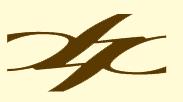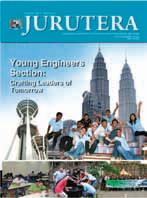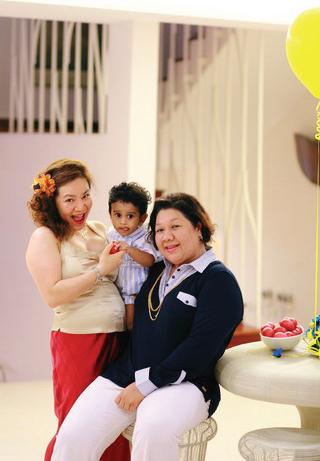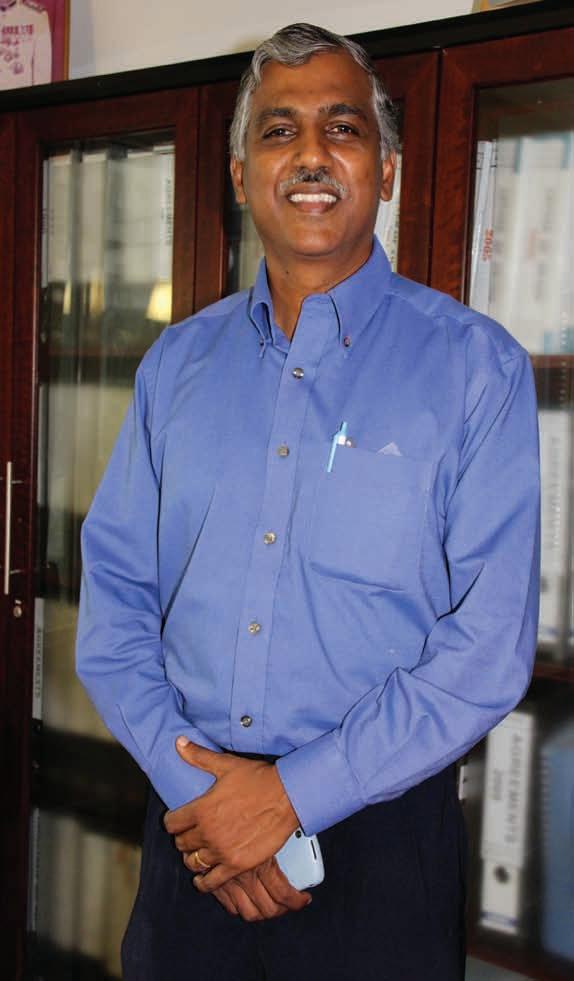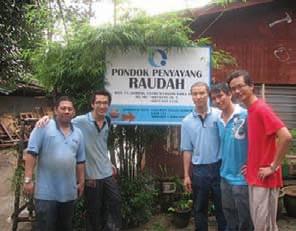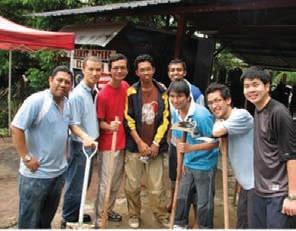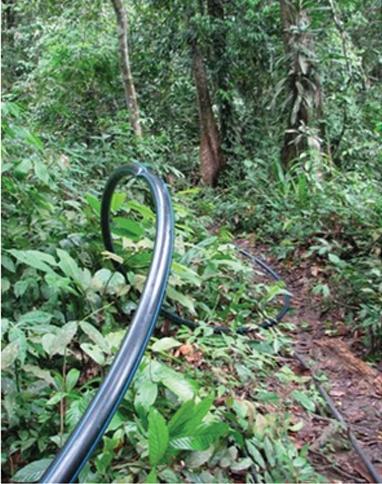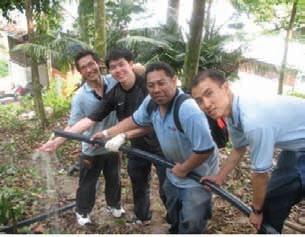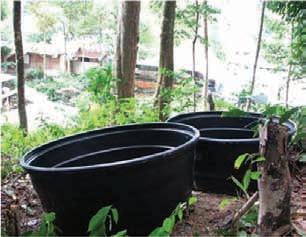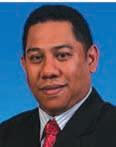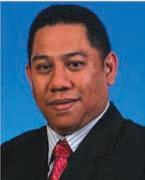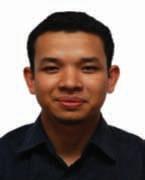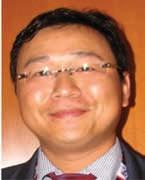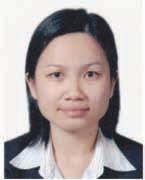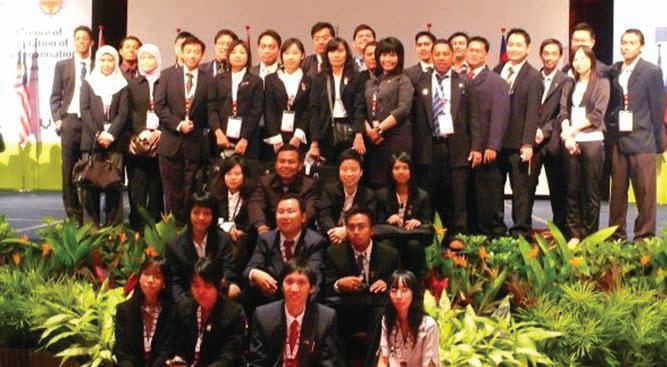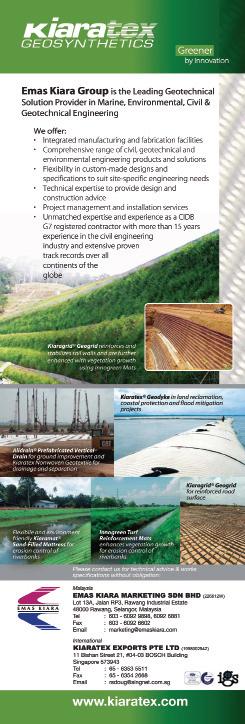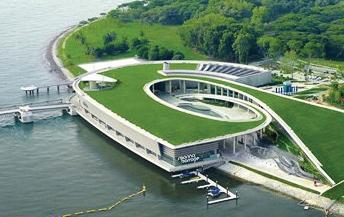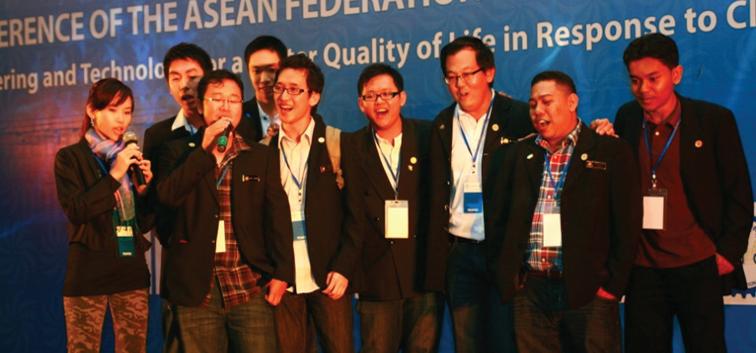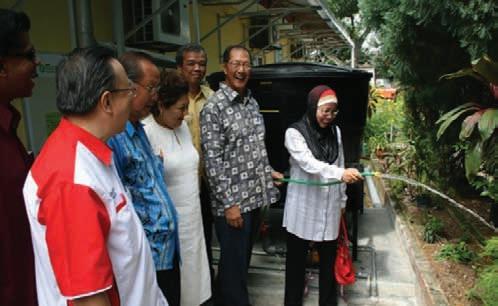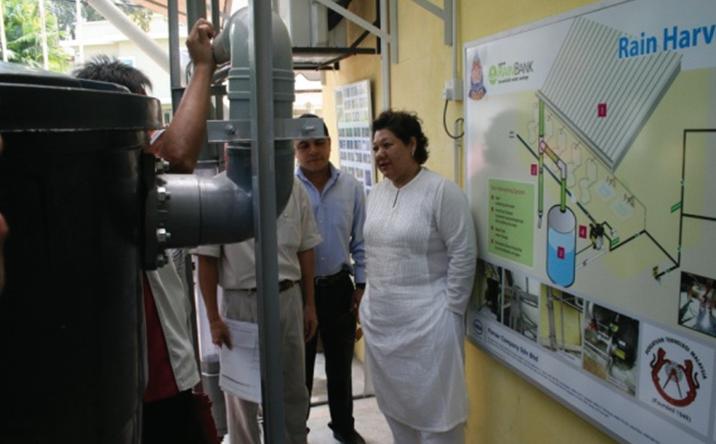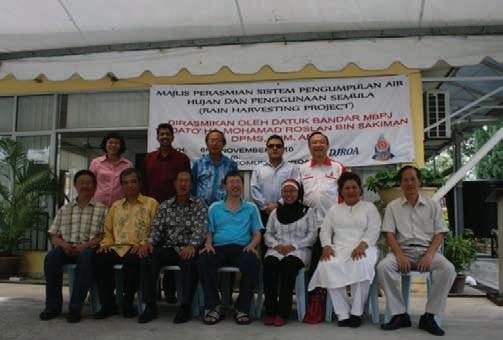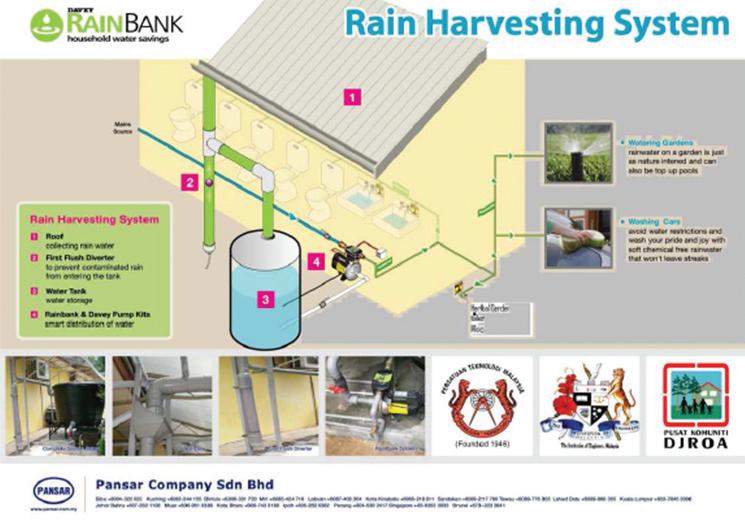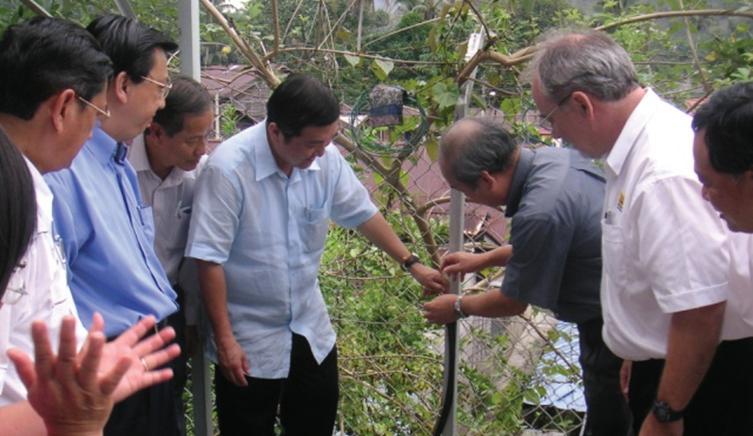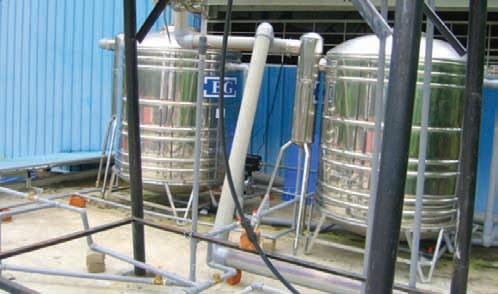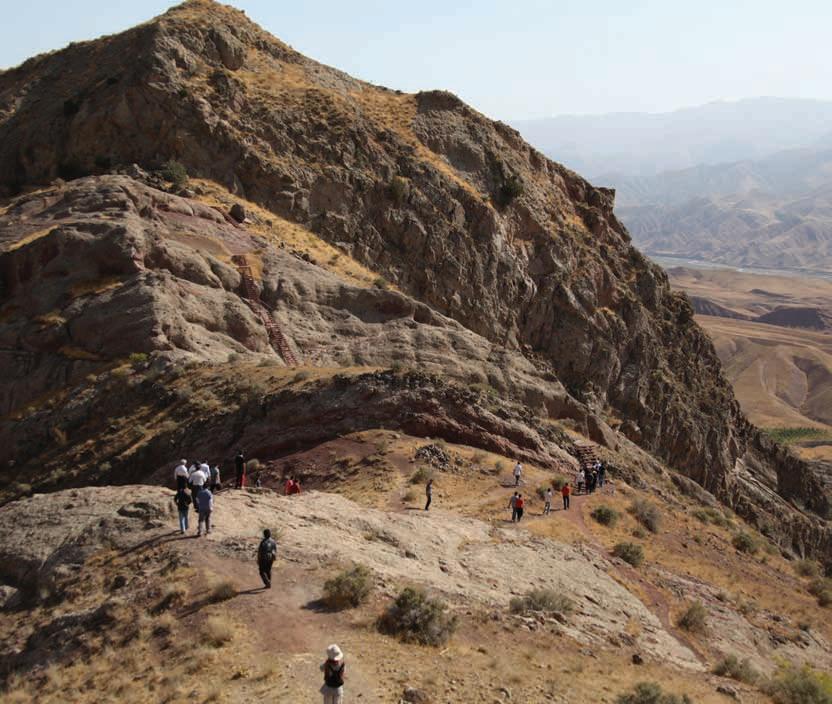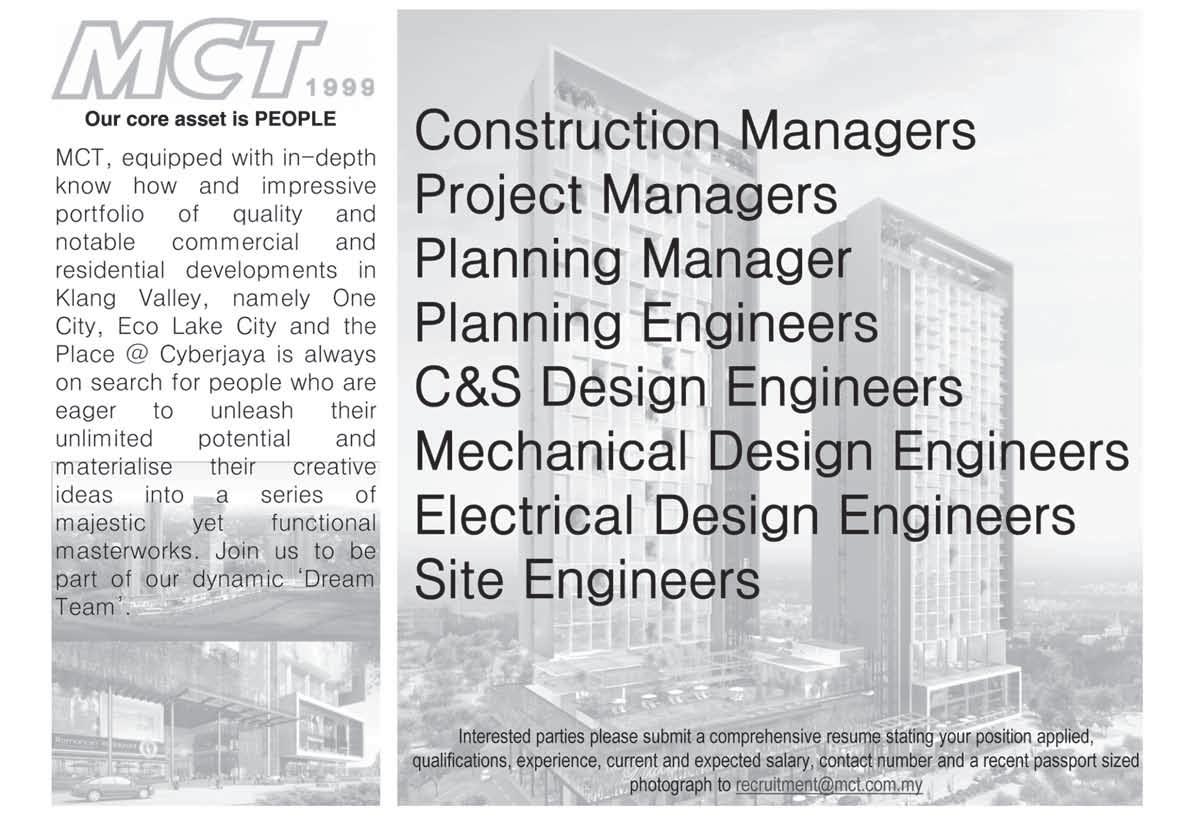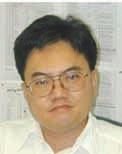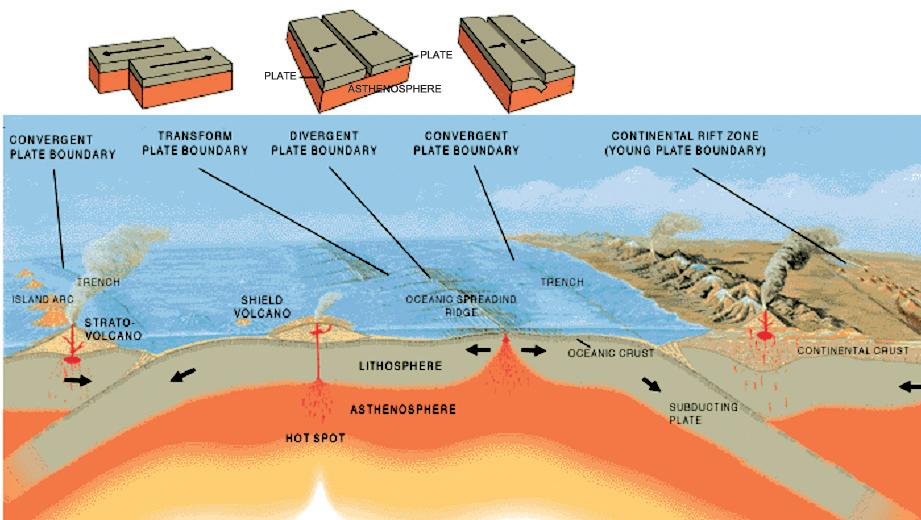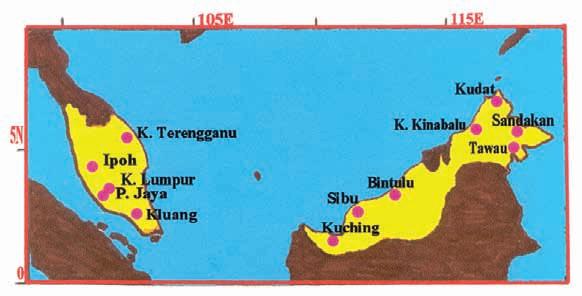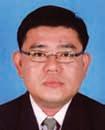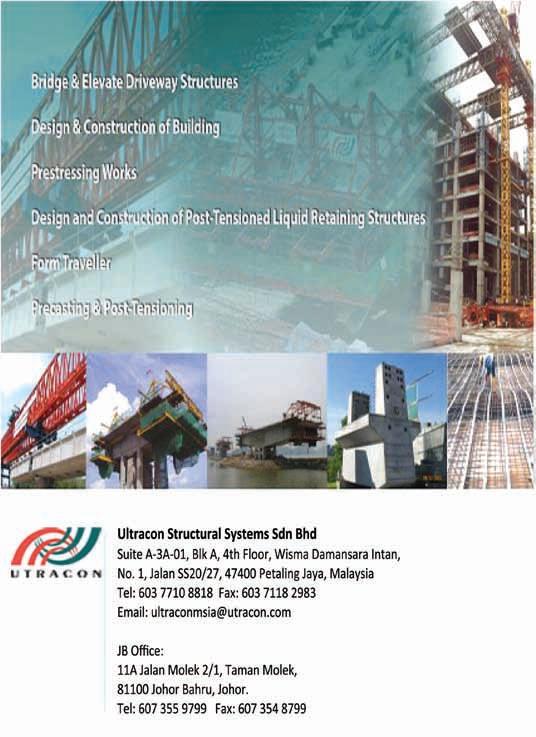development in Seismic actions Study in Malaysia and Implications to Professional Practice in the Local construction Industry (Part 1)
IntroductIon
The watershed events of 26 December 2004 and 28 March 2005 – when two major earthquakes struck the eastern seaboard side of Sumatra, in Banda Aceh and Nias respectively, have literally sent shockwaves throughout the world, while in the region, more than 200,000 lives have been lost. Malaysia has also experienced a number of casualties (particularly due to the tsunami tidal waves) from the Boxing Day disaster of 2004. Figure 1 shows two types of seismic zones on the island of Sumatra, i.e. the subduction plates out to sea on west coast side, and the inland fault right along the spine of the island.
These two earthquakes were felt in Peninsular Malaysia, in which some high rise building structures oscillated quite alarmingly for long periods, sending their occupants fleeing to the ground level. This has raised concern about the safety and vulnerability of existing building structures and the use of current structural design standards which do not specify the need for seismic design in Malaysia.
Background
The Institution of Engineers, Malaysia (IEM) took the initiative to study the earthquake issues and published a position paper which was released in 2007. It basically recommends the drafting of a guideline for seismic design for structures which are deemed to be vulnerable, especially to the far field effect of earthquake felt from Sumatra.
The formation of a technical committee at IEM spearheaded the effort to draft a Malaysian Standard on seismic design, and representation in the committee encompasses stakeholders in the local construction industry. Working groups were formed to tackle various issues of interest and concern, of which the most critical are in determining accurate peak ground acceleration, and to study the vulnerability of building structures. One of the working groups is looking into nonstructural components, and it is presently led by a registered practicing architect.
Besides highlighting the current status in seismic standard development in Malaysia, this paper also presents the key elements of earthquake engineering insofar as measuring its intensity and to predict the response and behaviour of structures. Along the way, an understanding was achieved on how to ensure such structures can be designed to withstand or to minimise the damages due to earthquake effects.
The issue of earthquake concern in Malaysia has always been tied to the tremors felt from far field seismic effect from nearby Sumatra – just over 350km away from the major populated areas in the Klang Valley and along the west coastal zones in Peninsular Malaysia. Local earthquakes occur infrequently but are of very low magnitudes, especially in Peninsular Malaysia. The maximum observed seismic intensity so far was VI on the Modified Mercalli (MM) scale (i.e. moderate shaking severity with falling objects). Nevertheless, higher magnitude earthquakes had occurred in parts of East Malaysia, particularly in the Lahad Datu area in Sabah, some of which resulted in some damaged properties and even human injuries.
Besides the local earthquakes, East Malaysia is also affected by large earthquakes which originated from the Southern Philippines and in the Straits of Macassar, Sulu Sea and Celebes Sea. The maximum observed intensity so far was VII on MM scale (i.e. strong shaking severity with nonstructural damage).
IEM undertook the position to draft and publish a position paper on this issue which was released in 2007. In the short term, IEM recommended these initiatives:
1. Urging for the need for more seismic monitoring stations in Malaysia.
2. Exhorting for the setting up of instrumentation for measuring the seismic response of buildings.
by Ir. Assoc. Prof. Dr Jeffrey Chiang
Figure 1: Tectonic boundaries a typical on the island of Sumatra
Note: This paper was presented at the PAM CPD Seminar 2011 on 25 February 2011 by Ir. Assoc. Prof. Dr Jeffrey Chiang.
3. Undertake seismic vulnerability studies of existing important buildings or structures, particularly in high-risk areas.
4. Review of the current Engineering Design and Construction Standards and Practices.
5. Propose for the design of high-rise buildings to cater for long period vibration. In addition, site specific ground motions are required for consideration in the design of highrise structures of seven storeys and above. This range of building’s height is found to be particularly vulnerable to the effects of earthquake.
In the long run, IEM is recommending these courses of actions by various players and stakeholders in the local engineering industry:
1. Develop or adopt a suitable code of practice with the necessary modification for the construction industry with regards to seismic design after the review.
2. Sensitive and important structures (e.g. hospital, BOMBA, police stations, important bridges, dams, power supply structures, telecommunication structures, etc) shall be checked for vulnerability when exposed to seismic ground motion.
3. Introduction of earthquake engineering education curriculum in the universities and other tertiary institutions of higher learning.
4. Sourcing for substantial rolling research fund for earthquake engineering research and also to include monitoring and risk assessment works.
5. Continuing education for practicing engineers is required in the areas of earthquake engineering in line with the call from the Board of Engineers Malaysia (BEM).
current SItuatIon
(a) Seismograph Network in Malaysia
A seismic wave radiated by the sudden release of energy from the earth will propagate to all directions and will arrive at a certain place depending on its velocity and the distance from the source to the site. If several sensors located at different places are operated and were able to detect approaching seismic waves, then a set of data of the arrival time will be obtained. From this record, the location of the source can be determined.
The precision in tracing back the source will depend on the quality of the measured data, which is influenced by several factors such as timing system, pointing up the seismic phase, position of the source with respect to the stations, etc., besides the variety of the responses of the ground through which the moving waves have passed.
Figure 2 shows the current location of seismological stations in both Peninsular and East Malaysia, which were set up and managed by the Malaysian Meteorological Service
(MMS), which serves as the national information centre for seismology. MMS provides information, advice and consultation related to earthquake to users such as engineers, architects and planners for the socioeconomic development of the country. The first few stations were set up and operated in 1979 at Petaling Jaya, Kluang, Ipoh and Kota Kinabalu.
As the need arose, three more stations, one at Kuala Terengganu, and the other two at Tawau and Kuching, were installed from 1986 to 1988. To meet the increasing demand for seismological information in the country, five more stations were installed (at Kuala Lumpur, Kudat, Sandakan, Bintulu and Sibu) from 1992 to 1998. Three from the total of 12 stations (Figure 2) are equipped with strong-motion accelerographs, i.e. Sibu, Bintulu and Sandakan – in anticipation of the higher intensity of the local earthquake felt there.
It has been said that with this network, the MMS has the capability to detect and identify earthquakes which occur in and around Malaysia with some degree of accuracy in the first hour after the event.
(b) The Need to Draft a Malaysian National Standard for the Seismic Design of Building Structures
Based on the recommendation by the IEM Position Paper, the Technical Committee (TC) on Earthquake Design was formed by the IEM upon the approval of the Department of Standards Malaysia (DSM) and SIRIM in March 2009. In order to be inclusive and transparent, most if not all major stakeholders in the construction industry were invited to send representatives to be members of the TC. This includes consultants, academics, contractors, government agencies and others. Five working groups (WGs) were formed to study the various aspects of the issue:
• Determining peak ground acceleration, seismic response spectrum and seismic mapping for Peninsular Malaysia;
• Vulnerability study of new and existing building structures to seismic actions in Peninsular Malaysia;
• Geotechnical study of ground conditions affecting seismicity and seismic design for structures in Peninsular Malaysia;
Figure 2: Seismological stations in Malaysia
• Effect of seismic actions on non structural elements of building structures in Peninsular Malaysia; and
• Base isolation methods to minimise the adverse effects of seismic actions on building structures in Peninsular Malaysia
The work of both the TC and the WGs have been ongoing since March 2009, and is being treated very seriously by the Construction Industry Development Board (CIDB) through its commercial arm CREAM, and also by the Ministry of Science Technology and Innovation (MOSTI) through the MMS. Both agencies have pledged some funding support for the work and activities of the TC.
(C) Outcome of Previous Local Research Undertaken
Universiti Teknologi Malaysia (UTM) has carried out a number of research projects on local earthquakes for the past 10 years or more, from the seismic zone mapping for Malaysia, and the application of local rubber bearing products as base isolators for infrastructural designs. As a well-established public university, a large amount of funding support was made available via Jabatan Kerja Raya (JKR) and also CIDB.
In 2007, JKR produced a Draft Guidelines on Earthquake Design for Reinforced Concrete Buildings in Malaysia, which is based on the research work undertaken by UTM. In it, the design procedures referred very much to two international earthquake standards, i.e. the American International Building Code (IBC2000) and the Eurocode EN1998. IEM was asked to make a technical assessment of the document, and in a technical paper published in 2008 (see Figure 3), two members of the TC commented critically on the Draft JKR Guidelines for Earthquake Design.
Basically, the guidelines were not acceptable to be adopted for use in the local industry due to its overestimation of the peak ground accelerations, and its full blown seismic design procedures which are straight out of the IBC2000 and EN1998, without suitable justifications for Malaysian practices. The industry would be in an uproar should such a guideline be made mandatory, rendering higher design costs than necessary –which would eventually be passed on to the purchasers.
Due to that technical assessment by the IEM, JKR decided not to release or finalise the document for the local industry practice. The TC is of the opinion that the recommended peak ground accelerations (PGA) in the Draft JKR Guidelines was excessive, e.g. for West Malaysia, a PGA of 0.08g – 0.10g was cited, whereas the recorded PGA by MMS (at the height of both the Banda Aceh and Nias earthquakes) were in the range of 0.001g to 0.003g. The problem is, JKR’s recommendations were based on the research work of UTM, which is very much probabilistic in approach – requiring recorded data of earthquakes in Malaysia, which is not available. And this approach is very much adopted from the research work of Pietersen which has formed the basis of earthquake modelling in North America, i.e. more suitable for near field earthquake, as opposed to the far field earthquake effect felt in Peninsular Malaysia.
The TC then decided to consult a regional panel of international experts who had years of research experience in earthquake engineering. In particular, Professor Nelson Lam of Melbourne University and his team of co-researchers had produced an earthquake prediction model which is widely known as the Component Attenuation Model (CAM) which had been successfully applied in India and Singapore. The advantage of this model is that it is quite accurate in determining the PGA of the regions which either have low to very low earthquake intensity, or do not have sufficient recorded earthquake data. And this fits in very much with the situation in Malaysia and even Singapore.
(d) Collaborations with an International Panel of Seismic Experts
It was in September 2009 when the TC invited Professor Lam to Malaysia to conduct joint seminars on earthquake design and analysis based on his research carried out at Melbourne University. In particular, he applied the CAM analytical model in Australia, and it has been found to be reasonably accurate, if applied to Malaysia and
BACKGROUND
Technical Review of JKR’s "Handbook on Seismic Design Guidelines forConcrete Buildings
in Malaysia"
By:Engr. Dr. Jeffrey Chiang, M.I.E.M., P. Eng and Engr. M. C. Hee, F.I.E.M., P. Eng
Inrecentyears,Malaysiahas experiencedtheeffectsofearthquake originatedmainlyfromepicentersin thewesternsubductionzonesof Sumatra.EastMalaysiaalsohasitsfair shareoflocalearthquakeswhichare c o n s i d e redasmoderate.Recently, JabatanKerjaRayaMalaysia(JKR)has draftedadocumentwhichpresented theproposedseismicdesignguidelines forconcretebuildingsinMalaysiain April2007.ItwasthensenttoThe InstitutionofEngineersMalaysia (IEM)fortheirtech nicalreviewand feedback.
INTRODUCTION
Thispaperrepresentstheviewsoftwo membersoftheIEMTe c h n i c a l CommitteeonEarthquake,whichwas formedinearly2006tostudythe possibilityofproducingadesign guidelineonearthquakedesignsuitable fortheconstructionindustryin Malaysia.TheobjectiveoftheIEM TechnicalCommitteeonEarthquakeis two-fold–toensureadequate pr otectionofthecommunityinthe eventofearthquaketremors,aswellas toensurethatthedesignprovisionsand constructionpractices(whetherexisting oramended)aresuitableandpractical forMalaysianprofessionalpractices. Thereviewpresentedhereinwillnot focusonstyleandformatof p r esentation,forexample,the inconsistencyinthetitle.Thefrontpage covertitlemaybe"Handbookon SeismicDesignGuidelinesForConcrete BuildingsinMalaysia"buttheheader titleinsidethehandbookis "DevelopmentofSeismicDesign GuidelinesforConcreteBuildingsin Malaysiafor JKR".Thesetypesof inconsistenciescanbesortedoutbythe author/s.Thescopeofreviewisonthe contentitselforthelackofconsistencies
JURUTERA,March2008 26
inthemethodology.Thisreviewwillbe followedbyamorecompre h e n s i v e commentsonthedetailedcalculations foundintheGuidelines,whichwillbe forthcominginfutureissueofIEM JuruteraBulletin.
COMMENTONTHE INTRODUCTIONOFTHEDESIGN
HANDBOOK:
The Introduction section consists of:-
• SeismicHistoricalBackgroundof Malaysia Scope of Handbook
• NationalAnnex
• Standard Code Applied
Asageneralguide,theseismic historicalbackgroundisinformative, butitwouldbemoreappropriateto placeitinthefore w o rdorinthe appendix.Furthermore,itisalso misleadinginoneparticularparagraph, inwhichitstated,"The9.0magnitude earthquakeon26December2004,about 100milesfromthewesterncoastof Indonesia’sSumatraIsland,has generatedtsunamiintheIndianOcean. TheworstaffectedareasinMalaysia w e r ePenangandKedah,where68 peoplehadbeenkilledandmorethan 100peoplewereinjured."Now,an impartialreaderonreadingitmaybe alarmedasitgivestheimpressionthat theAceh’searthquakehascausedover 100casualtiesinMalaysia,whereasthe realityisthatthesenumberofcasualties areduetothetsunamiwhichhitthe shoresinPenangandKedah.Therefore thispieceofinformationwouldbemore appropriateforadesignguidelinefor tsunamieffect,andnotseismic.
On a more technical note, as a guide, readersmayneedtohavemore informationonhowtousethe Guidelines, such as basic design criteria, and design requirements. These are not clearly defined or outlined, neither in the
introduction nor in the guideline proper. Aftertheintroductionsection,the guidelinejumpsstraightintothe proceduresofdesignandanalysisof buildings, and followed by analysis and design examples.
Basic terms and definitions are not presented, neither at the beginning nor at the end of the Guidelines.As a first Malaysian’sreferencedocumenton seismicdesign,basictermsand definitions are necessary, for example, the useoftheword‘gals’(inthe macrozonation seismic mapping), ‘peak groundacceleration’(PGA),seismic responsespectrum,g-term,andmany others are very useful not only for the designers but also for the general readers.
Another important aspect of seismic effect not clearly stated or defined is "Far fieldeffectofearthquake",whichis exactly the seismic effect experienced by populationinPeninsularMalaysia because of the distance effect transmitted from a far epicenter of earthquake in Sumatra.Thishasimplicationon whethertoadoptafull-scaledesign approachforseismicactions(asif Malaysia experiences direct earthquakes, withlocalactivefaultlin esand epicenters) or to use a minimized design approach (as in a far field or distance seismic effect). This should be clearly explained at the beginning so as to justify the design approaches to be specified in later sections.
On the use of National Annex, it is more suited if there is an intention to adopt the Eurocode 8 on seismic design, which again is not stated clearly. This is becauseinthestandardcodetobe applied, two international design codes forseismicactionswerecitedas references,i.e.Eurocode8andthe American-based IBC 2000. This is not the usual and accepted norm in adopting a design guideline, as both "…shared the sameobjectivesbutmayproduce
Singapore, based on recent published technical papers by his co-researchers in Singapore. In an interesting development, Professor Lam had proposed the following:
• Instead of focusing on the determining PGA which is the conventional approach in ultimately calculating the base shear which is then used to predict the response of building structures to earthquake motion, he proposed the primary objective in studying the peak ground velocity and even peak ground displacement – which would give a better perspective in studying the vulnerability of building structures to earthquake.
• Since the far field earthquake (due to tremors felt from the seismic active areas in Sumatra) had proven to be of a lesser threat, he suggested for Malaysian researchers to
focus instead on local earthquake or near field earthquake. In particular, in areas in the vicinity of the 80km long Bentong fault, close to Bukit Tinggi, where recorded earthquakes of low magnitude around M3.5 has occurred. And this study should also be extended across to East Malaysia where there are also some active fault lines.
Out of this collaboration with renowned international experts, the TC has organised further activities in 2010, in which Professor Lam was invited to conduct an extended joint seminar in June 2010 together with Dr Tsang Hing Ho from Hong Kong University. This culminated in an intensive two-day workshop in which three invited panel experts (Professor Lam, Dr Tsang and Dr Kusno Megawati from the Nanyang Technological University of Singapore), had provided timely advice and recommendations in the way forward for Malaysia to undertake seismic studies to the next level.
Dr Tsang was involved in the aftermath study of the Sichuan earthquake devastation in China in 2008, whereas Dr Kusno Megawati had worked closely with both Professor Lam and Dr Tsang in Hong Kong and also in Singapore on geological mapping for seismic studies.
Further joint research collaboration effort are planned for 2011, in the form of a geophone seismic survey exercise to be carried out in Hong Kong. Malaysia has been invited to send representatives to observe and study the procedure and equipment usage, so that the same exercise can then be adopted in a similar survey planned for the Bentong fault and in areas of close proximity. It has to be noted that the Bentong fault is only about 30km35km away from Kuala Lumpur city centre, and earthquake is an event that is very unpredictable in nature – both in the probability of happening and also in the magnitude and devastation which can be inflicted upon nearby occupied structures. n
Remarks: Part 2 would be published in May 2011 issue.
Figure 3: Technical input by the IEM of the JKR Draft Seismic Design Guidelines (JURUTERA - March 2008)
To All Members,
Date: 14 February 2011
CaNDIDateS aPPrOVeD tO SIt FOr Year 2011 PrOFeSSIONaL INterVIeW
The following candidates have been approved to sit for the Professional Interview for 2011. In accordance with Bylaws 3.9, the undermentioned names are published as having applied for membership of the Institution, subject to passing the year 2011 Professional Interview.
If any Corporate Member of the Institution has any reason as to why any of the candidates is not a fit and proper person for election, he should communicate in writing to the Hon. Secretary. Such communication should be lodged a month from the date of publication.
Ir. Prof. Dr Lee Teang Shui Honorary Secretary, The Institution of Engineers, Malaysia
NeW aPPLICaNtS
Name Qualifications
CHeMICaL eNGINeerING
ZULKIFLY BIN SULAIMAN BE HONS (UTM) (CHEMICAL, 1993)
CIVIL eNGINeerING
AHMAD RIDZUAN BIN AB RAHMAN BE HONS (UiTM) (CIVIL, 2004)
FATHEEYAH BINTI ZAINUDDIN BE HONS (UTM) (CIVIL, 2001) ME (UiTM) (CIVIL, 2008)
GAPAR BIN ASAN ADV. DIP (UiTM) (CIVIL, 1987)
SALAWATI BINTI ZAINUDDIN BE HONS (UTM) (CIVIL, 2000) MSc (IIUM) (BUILDING SERVICES, 2009)
eLeCtrICaL eNGINeerING
KUAN LEE CHOO BE HONS (UNITEN) (ELECTRICAL & ELECTRONIC, 2001) MSc (IMPERIAL COLL OF SCIENCE, TECH, MEDICINE) (CONTROL SYSTEM, 2002)
MeCHaNICaL eNGINeerING
MOHD SHAKRI BIN ABDULLAH BE HONS (UTM) (MECHANICAL, 2006)
traNSFer tO tHe GraDe OF FeLLOW
Mem No. Name Qualifications
CIVIL
14327 CHIENG LEE HONG BE (MONASH) (CIVIL, 1990)
MeCHaNICaL
12369 ABD RASHID BIN MD SIDEK BSc (SALFORD) (MECH, 1983)
12685 LING NGIE SOON BE HONS (UTM) (MECHANICAL, 1993)
traNSFer tO tHe GraDe OF MeMber
Mem No. Name Qualifications
aGrICuLturaL
11127 SAMSUDEEN BIN VARUSAY GANNY BE HONS (UPM) (AGRICULTURAL, 1984)
CHeMICaL
24919 LEE SIONG HOONG BE HONS (UMS) (CHEMICAL, 2004) ME (UPM) (ENVIRONMENTAL, 2006)
41090 NG PER CHIAN BE HONS (UTP) (CHEMICAL, 2002)
19875 PANG KEE SIANG BE HONS (UPM) (CHEMICAL, 2001)
CIVIL
16159 ABD HALIM BIN CHE BE HONS (UM) (CIVIL, 1991)
ZAINUL ABIDIN
26751 AHMAD RAHIMI BIN MAT BE HONS (UTM) (CIVIL, 2004)
25753 AHMAD TARMIZI BIN ALI BE HONS (USM) (CIVIL, 2002)
24265 ALISON SHREENAWATHI BE HONS (UPM) (CIVIL, 2000)
D/O R. HARISAN
25072 ANILARASU A/L AMARANAZAN BE HONS (UTM) (CIVIL, 2005)
3393 CHONG CHEE HAN BE HONS (UM) (CIVIL, 1980)
19818 CHUA KUO SHENG, JERRY BE HONS (UTM) (CIVIL, 2003) MSc (UTM) (CONSTRUCTION MANAGEMENT, 2004)
35619 HAR LEE SONG BSc (UTM) (CIVIL, 2002)
25648 HO CHEE SIANG BE HONS (UPM) (CIVIL, 2004)
25427 KHOO CHEE SEONG BE HONS 9UPM) (CIVIL, 2004)
5781 KONG AH VOON BSc HONS (SALFORD) (CIVIL, 1981)
23845 LEE KHIM LIANG BE HONS (UKM) (CIVIL & STRUCTURAL, 2000)
20600 LEOW YOKE CHING BE HONS (UPM) (CIVIL, 2004)
23915 LIEW KOK SENG BE HONS (HERRIOT-WATT) (CIVIL, 1997)
21605 LOO CHANG SOON BE HONS (UTM) (CIVIL, 2005) ME (UTM) (CIVIL - STRUCTURAL, 2005)
27624 MOHD HARIS BIN ABDUL BE HONS (UPM) (CIVIL, 2003) HALIM @ISMAIL
traNSFer aPPLICaNtS
Mem No. Name Qualifications
CIVIL eNGINeerING
24190 EDWIN A/L JOHN BE HONS (LIVERPOOL JOHN MOORES) CLEMENT HENRY (CIVIL, 2002)
26447 LEE TSE WENG BE HONS (UTP) (CIVIL, 2005)
43590 LIM FU YEE BE HONS (UTM) (CIVIL, 2005)
25443 LUE LEONG SHEN, HENRY BE HONS (UTHM) (CIVIL, 2003) ME (UTM) (CIVIL - STRUCTURE, 2004)
29002 MOHAMAD EMRAN BIN BE HONS (UiTM) (CIVIL, 2006)
BAHARUDIN
45364 MOHD NAZREE BIN YUSOF BE HONS (UTM) (CIVIL - CONSTRUCTION MANAGEMENT, 2002)
25789 WONG CHUAN MEIN BE HONS (SOUTHERN QUEENSLAND) (CIVIL, 2005)
eLeCtrICaL eNGINeerING
26868 CHAN CHIAW YIN BE HONS (UKM) (ELECTRICAL & ELECTRONIC, 2004)
39146 IBRAHIM JAFFAR BIN BE HONS (UM) (ELECTRICAL, 1999) OI HUMAYUN KHABEER
traNSFer tO tHe GraDe OF MeMber
traNSFer aPPLICaNtS
Mem No. Name Qualifications
28823 LAU WENG HOONG BE HONS (UTM) (ELECTRICAL, 2006)
29752 LEE WAI KUAN BE HONS (UTM) (ELECTRICAL, 2007) 24197 MOHD SANY BIN MD SO'OD BE HONS (RMIT) (ELECT, 1998)
30596 MUHAMMAD HAFIZUDDIN BE HONS (UM) (ELECTRICAL, 2006) BIN MOHAMAD
27130 PANIR SELVAN S/O VEERAN PT II (IEM/BEM) (ELECTRICAL, 2003) BSc (HERTFORDSHIRE) (ELECTRICAL & ELECTRONIC, 1997)
33709 PUNITHA RAMAN A/L BE HONS (UNITEN) DORAISAMY (ELECTRICAL POWER, 2005)
eLeCtrONIC eNGINeerING 43669 LIM YEW KIM BE HONS (MMU) (ELECTRONICS, 2002)
MeCHaNICaL eNGINeerING 39994 LENNY MARLINA BINTI BE HONS (UTHM) (MECHANICAL, 2005) MOHD KAIRI 39991 LOO CHENG TIONG BE HONS (UTHM) (MECHANICAL, 2005)
traNSFer tO tHe GraDe OF MeMber
Mem No. Name Qualifications Mem No. Name Qualifications
13340 MOHD SHAHIRUDIN BIN TAHA ADV DIP (UiTM) (CIVIL, 86)
20356 NOOR AZIDY BIN ISHAK BE HONS (UTM) (CIVIL, 1999)
33803 POH KONG CHIN BE HONS (USM) (CIVIL, 2003)
26757 RAZALIE BIN SINDONG BE HONS (UTM) (CIVIL, 2002)
33949 ROZAIDI BIN AMAT BE HONS (UM) (CIVIL, 1999) ME (UTM) (HYDROLOGY & WATER RESOURCES, 2008)
8983 SAW POI TEE BSc (QUEEN'S, CANADA) (CIVIL, 1981)
7232 SIAH BOON SEONG BSc (LEEDS) (CIVIL, 1981)
24337 TENGKU ANITA BINTI BE HONS (UiTM) (CIVIL, 1997) RAJA HUSSIN
23206 TEO KOON HAU BE HONS 9BIRMINGHAM) (CIVIL, 2002) ME (UTM) (CIVIL-GEOTECHNICS, 2010)
24248 THOO HOI HIAN BE HONS (UTM) (CIVIL, 2001) ME (UTM) (CIVIL, 2002)
20395 THOW YIN LAP BE (MCMASTER, CANADA) (CIVIL, 1998)
25555 VOON SIAW CHEE BE HONS (UMS) (CIVIL, 2001)
18659 WAN GIT ONN BE HONS (UKM) (CIVIL, 1997)
14641 WAN IBRAHIM BIN WAN SAID BE HONS (BRISTOL) (CIVIL, 1991)
28962 YAP HIONG YONG BE HONS (UPM) (CIVIL, 2002) MSc (UPM) (HIGHWAY & TRANSPORTATION, 2005)
16607 ZARINAH BINTI MOHAMAD ALI BE HONS (USM) (CIVIL, 1997)
eLeCtrICaL
26943 FUNG CHUN TING BE HONS (UTP) (ELECTRICAL & ELECTRONIC, 2005)
29248 HEW CHIN MOO BE HONS (UTM) (ELECTRICAL, 2003)
26860 KOK KAR HONG BE HONS (UNITEN) (ELECTRICAL,POWER, 2005)
25594 LEE CHOUN MUN BE HONS (MMU) (ELECTRICAL, 2002)
24040 LEE WAI LING BE HONS (UMS) (ELECTRICAL & ELECTRONIC, 2004)
24331 LIEW SIAW SAN BE HONS (ADELAIDE) (ELECTRICAL & ELECTRONIC, 2003)
28376 LIM PUI LANG @ RACHEAL BE HONS (UMS) (ELECTRICAL & ELECTRONIC, 1991)
36654 MD
eLeCtrONIC
25878 LEONG TUK WAI, DAVID ME HONS (EXETER) (ELECTRONIC, 2001) ME (MELBOURNE) (TELECOMMUNICATIONS, 2003) 42053 MOK VEE HOONG BE HONS (UMIST) (ELECTRICAL & ELECTRONIC, 2000), PhD (UMIST) (ELECTRICAL & ELECTRONIC, 2003)
MaNuFaCturING
28860 MOHD RIZAL BIN ALKAHARI BE HONS (UIAM) (MANUFACTURING, 2000), MSc (WARWICK) (MANUFACTURING SYSTEMS, 2006)
MeCHaNICaL 42440 AHMADZAMRI BIN PERMAN BSc (PENNSYLVANIA) (MECHANICAL, 2001)
25426 HOW YONG CHANG BE HONS (UM) (MECHANICAL, 2004)
22771 KUMARAN A/L PALANISAMY BSc (PURDUE) (MECHANICAL, 1999) 22803 MAHADHIR BIN MANAN BE HONS (UiTM) (MECHANICAL, 2005) 24223 ROSDAN BIN ISMAIL BE HONS (UKM) (MECHANICAL, 2001)
26890 WAN ADIL BIN WAN ADLI BE HONS (MIDDLESEX) (MECHANICAL, 1998)
29604 WONG KIEN FATT BE HONS (UTM) (MECHANICAL, 2006)
StruCturaL 28061 TENG YUE HOONG BE HONS (UM) (CIVIL, 2006)
PaSS Pae
Mem No. Name Qualifications
aDMISSION / eLeCtION / traNSFer
The IEM Council, at its 375th meeting on 21 January 2011 approved the admission / election / transfer of a total of 1371 members, consisting the following:
Manufacturing
Manufacturing
The Members’ names and qualifications are detailed on pages 51 to 52. The Institution congratulates the members on their admission / election / transfer
Thank you.
Ir. Prof. Dr Lee Teang Shui Honorary Secretary, The Institution of Engineers, Malaysia
eLeCtION tO tHe GraDe OF MeMber
Name Qualifications
CHeMICaL
ARMAN BIN ABDULLAH BE HONS (UTM) (CHEMICAL-GAS, 2000) MSC (UPM) (ENVIRONMENTAL, 2005)
KOK VUI TEK ME (IMPERIAL COLLEGE OF LONDON) (CHEMICAL, 2000)
CIVIL
HASHIM BIN SAID BE HONS (UTM) (CIVIL, 1995)
KHOR TSE TONG BE HONS (UKM) (CIVIL & STRUCTURAL, 1999)
KONG TECK CHAU, PATRICK BSC (CALIFORNIA STATE UNI, FRESNO) (CIVIL, 1997)
LOW TIAN HUAT BE HONS (UM) (CIVIL, 1994) MSC (UM) (SCIENCE, 2001)
MD WAHID BIN MOHD NOR BE HONS (UM) (CIVIL, 1984)
SHAHRUL ARIZAN BIN MOHAMAD ADNAN BE HONS (UTM) (CIVIL, 2002)
SUHAINI BINTI SHAMSUDIN BE HONS (UTM) (CIVIL, 2000)
TAN CHEN WEI BE HONS (PORTSMOUTH) (CIVIL, 2004) MSC (PORTSMOUTH) (CIVIL, 2005)
TAY ENG MIAN, ALLAN BE HONS (UTM) (CIVIL, 2005) MSC (UTM) (CONSTRUCTION MANAGEMENT, 2006)
WONG TOH KOO BE (NSW) (CIVIL, 1991)
YEE KAI KENG @ JOO KAI KENG BE HONS (SUNDERLAND) (CIVIL, 1996)
ZAIZUL IMRAN BIN ZAINAL BE HONS (UKM) (CIVIL & STRUCTURAL, 1998)
eLeCtrICaL
CHEAM THONG YEEN BE HONS (SOUTHAMPTON) (ELECTRICAL, 1993)
HARJIT SINGH A/L MILKA SINGH BSC HONS (MICHIGAN STATE UNI) (ELECTRICAL, 1999)
MOHD KHALID BIN OTHAMAN BE HONS (UITM) (ELECTRICAL, 2005)
MOHD NORFAIZAL BIN FARID BE HONS (UNITEN) (ELECTRICALPOWER, 2003)
SHAHARUDDIN BIN AHMAD BE HONS (UTM) (ELECTRICAL, 1997)
TEH AIK KHIN BE (ADELAIDE) (ELECTRICAL & ELECTRONIC, 2004) MTECH (CURTIN) (PETROLEUM TECHNOLOGY, 2010)
WONG HEE HUING BE (AUCKLAND) (ELECTRICAL, 1970)
WONG TSERN HOW, FELIX BE HONS (LEICESTER) (ELECTRICAL & ELECTRONIC, 1996)
ZALILAH BINTI MD NAFIS BE HONS (UM) (ELECTRICAL, 1992)
eLeCtrONIC
MOHD SYAFFIAN BIN HUSSIN BE HONS (UKM) (ELECTRICAL, ELECTRONIC & SYSTEM, 2001)
MeCHaNICaL
ABU HASHIM BIN ABDUL RAHMAN BE HONS (UPM) (MECHANICAL SYSTEM, 1995)
AMIR RADZI BIN AB GHANI BE HONS (LIVERPOOL) (MECHANICAL SYSTEMS & DESIGN, 1994) MSC (LIVERPOOL) (MECHANICAL SYSTEM, 1995)
aDMISSION tO tHe GraDe OF GraDuate Mem No. Name Qualifications
aerONautICaL
44552 SURESH S/O VIJAYA KUMARAN B.E.HONS.(UPM)(AEROSPACE,08) aerOSPaCe
44131 KHAIRUL IZMAN BIN ABDUL RAHIM B.E.HONS.(USM)(AEROSPACE,08) CaD/CaM
45356 ONG YU LEE @ B.E.HONS.(MALAYA)(CAD/ CAM,07) CHANTURUVARMAN
CHeMICaL
44583 CHANG SIU HUA B.E.HONS.(UTM)(CHEMICAL,04)
44133 CHING YERN CHEE B.E.HONS.(UTM)(CHEMICAL,99) MSc(UTM)(POLYMER,02)
45348 CHO KAI SHIN B.E.HONS.(UMS)(CHEMICAL,04)
44562 FAISAL BIN MOHD GHAZALI B.E.HONS.(UTP)(CHEMICAL,04) MAHDI SAHEL
45383 GAN SUYIN B.E.HONS.(SHEFFIELD)(CHEMICAL,99)
45279 HANNA HAMIZAH BINTI B.E.HONS.(COLLEGE LONDON) MUHAMMAD RAZIF (CHEMICAL,09)
44126 HENG SIEW AUN B.E.HONS.(UPM)(CHEMICAL,09)
44579 HII CHING LIK B.E.HONS.(UMIST)(CHEMICAL,96) MSc.(UPM)(FOOD PROCESSING,04) PhD.(NOTTINGHAM)(CHEMICAL,10)
44171 JUFERI BIN IDRIS B.E.HONS.(UiTM)(CHEMICAL,04) MSc(UiTM)(CHEMICAL,08)
45384 LEE LAI YEE B.E.HONS.(BATH)(CHEMICAL,91)
44134 MUHAMAD FAIZAL BIN B.E.HONS.(UTM)(CHEMICAL-GAS,05) MOHD NOOR
45379 NOR RAIMY BIN ISMAIL B.E.HONS.(UTM)(CHEMICAL,04)
45300 POOVARASI BALAN B.E.HONS.(UPM)(CHEMICAL,04) MSc(MATERIALS SCIENCE & ENGINEERING,06)
44580 ZAINAL BIN AHMAD B.E.HONS.(SURREY)(CHEMICAL,98) MSc.(NEWCASTLE)(CHEMICAL,01) PhD.(NEWCASTLE,05)(CHEMICAL,05)
CIVIL
45290 AHMAD HAIDIR BIN IBRAHIM B.E.HONS.(UiTM)(CIVIL,10)
44540 AILIN NUR JAFFAR OSMAN B.E.HONS.(UiTM)(CIVIL,10)
44547 AIZAM BINTI YUSOFF B.E.HONS.(USM)(CIVIL,10) MSc.(USM)(STRUCTURAL,05)
45353 AKMAL HISWAN BIN ARBA'ENI B.E.HONS.(UTM)(CIVIL,06)
45373 ALEXANDER KANIANTHARA M.E.HONS.(IMPERIAL)(CIVIL,01) THOMAS
eLeCtION tO tHe GraDe OF MeMber
Name Qualifications
CHONG KOK HIUNG BE HONS (UTM) (MECHANICAL, 1993)
CHONG WOEI TDING BE HONS (UM) (MECHANICAL, 2001)
CHUA YONG LING B APP SC (TORONTO) (MECHANICAL, 84)
DATO' MUKHLIS CHUA @ CHUA CHING KOK BSC HONS (UMIST) (MECHANICAL, 1983) MSC (IMPERIAL COLLEGE OF LONDON) (MECHANICAL, 1984)
ELMEIZAL BIN JAMALUDIN BE HONS (UKM) (MECHANICAL, 2002)
FADZLI BIN BURHANUDDIN BE HONS (UNITEN) (MECHANICAL, 2003)
KAN MUN HOOW BSC (WESTERN MICHIGAN) (MECHANICAL, 2002)
KUSTINE ANAK NGADI BE HONS (POLYTECHNIC CENTRAL LONDON, CNAA) (MECHANICAL, 1991)
LAM KAI MIN BE HONS (MMU) (MECHANICAL, 2003)
LOKMAN BIN MOHD NOH BSC (MICHIGAN) (MECHANICAL, 2003)
MOHD ROSE RIZAL BIN MOHAMAD RASIDI BE HONS (UKM) (MECHANICAL, 2001)
MUHAMMAD FADZLI BIN MUHAMMAD SALEH BE HONS (GLASGOW) (MECHANICAL, 2004)
MUSTPHA KAMAL BIN ZAINAL BE HONS (UTM) (MECHANICAL, 2002)
ZAINOL ABIDIN BIN AWANG SA BE HONS (UM) (MECHANICAL, 1998)
PaSS Pae
Name Qualifications
CIVIL LONG AHMAD BURHANUDDIN BE HONS (UTM) (CIVIL, 1986) BIN LONG HASSAN
eLeCtrICaL
GOPINATHAN A/L P.K. MENON DIP (SOUTHALL COLLEGE OF TECH) (ELECTRICAL & ELECTRONIC, 1969)
LAM CHOON KAY BE HONS (LEICESTER) (ELECTRICAL & ELECTRONIC, 1998)
MOHAMAD RAFE BIN MAMAT BE HONS (NEWCASTLE UPON TYNE) (CIVIL, 1990)
eLeCtrONIC
PERABAGARAN A/L EAHAMBRAM BE HONS (HERTFORDSHIRE) (ELECTRICAL & ELECTRONIC, 1997)
traNSFer tO tHe GraDe OF GraDuate
Mem No. Name Qualifications
CHeMICaL 34201 SHAHRUL NAZMI BIN OTHMAN B.E.HONS.(UMP)(CHEMICAL,09)
CIVIL 32955 ABDUL RAHIM BIN SULAIMAN B.E.HONS.(UiTM)(CIVIL,09) 39667 AMI HALIMAH BINTI SUBIRDAN B.E.HONS.(UTHM)(CIVIL,10)
aDMISSION tO tHe GraDe OF GraDuate
traNSFer tO tHe GraDe OF GraDuate
Mem No. Name Qualifications
IBRAHIM
B.E.HONS.(UNIMAS)(CIVIL,10) 21715 CHAI TZER LUEN
B.E.HONS.(UTM)(CIVIL,05) 28425 CHAN KUAN HONG
B.E.HONS.(UTAR)(CIVIL,10) 40821 CHAN KWONG TANG B.E.HONS.(KLiUC)(CIVIL,10)
B.E.HONS.(MALAYA)(CIVIL,09)
A/P RAMAMURTHI B.E.HONS.(UTM)(CIVIL,09) 40820 KOH CHING SENG
B.E.HONS.(KLiUC)(CIVIL,10) 28123 KONG SIONG YUNG
B.E.HONS.(USM)(CIVIL,09) 20450 LEE CHIN HUI B.E.HONS.(UNIMAS)(CIVIL,01) 30174 LEE WEI CHERN B.E.HONS.(UKM)( CIVIL & STRUCTURAL,10) 41490 MOHD NIZAM BIN AB RAPAR B.E.(BIRMINGHAM)(CIVIL,04) 31543 MUHAMMAD AMAN BIN B.E.HONS.(NUS)(CIVIL,08)
MOHAMED ABOOBUCKER 21253 NOOR AZLINA BINTI AMBAK B.E.HONS.(UTM)(CIVIL,10) 37368 NOR AZIZAH BINTI B.E.HONS.(UTHM)(CIVIL,10)
MOHAMMED RUM 35675 OOI WEI HAO B.E.HONS.(UTM)(CIVIL,10) 37639 PANG CHENG LONG, ALISTAIR B.E.HONS.(UTAR)(CIVIL,10) 18165 RAHMAT BIN MUSLIM B.E.HONS.(UTM)(CIVIL,06) 28428 SHARIFAH BAIZURA BINTI B.E.HONS.(UKM) MOHD HARIS (CIVIL& STRUCTURAL,09) 42197 SITI NOR FATIMAH BINTI ZURAIDI B.E.HONS.(UTHM)(CIVIL,10) 21682 THANG CHEE KEONG B.E.HONS.(UTM)(CIVIL,04) 28220 TSEN YEE TING B.E.HONS.(USM)(CIVIL,09) 19419 WAN AZURA BT. B.E.HONS.(UTM)(CIVIL,00) WAN MOHD NASIR 27409 WONG CHUNG YEE, GAVIN B.E.HONS.(USM)(CIVIL,08) 29483 YEONG JIT MING B.E.HONS.(UPM)(CIVIL,08) 22091
ZAINAHAIZA BINTI ZAINON B.E.HONS.(UTHM)(CIVIL,05) 17258 ZAULKARNAIN BIN ABD. MANAP B.E.HONS.(UTM)(CIVIL,99)
eLeCtrICaL 32576 LIM BOON CHEW B.E.HONS.(MMU)(ELECTRICAL,09) 29539 MOHD SHAHRIZAN BIN SAHRI B.E.HONS.(UMP)(ELECTRICALCONTROL & INSTRUMENTATIONS,08)
eLeCtrONIC 31897 FAUZAL NAIM BIN ZOHEDI B.E.HONS.(UMP)(ELECTRICAL,08) 26077 MOHD ZAID BIN SAID B.E.HONS.(IIUM) (ELECTRONICCOMPUTER & INFORMATION,09) 20476 ZARINA BINTI MOHD. NOH B.E.HONS.(MMU)(ELECTRONIC,02) MSc(ELECTRICAL-ELECTRONIC & T'COMMUNICATIONS,09)
MeCHaNICaL 30290 ELIZA BINTI KAMARUDIN B.E.HONS.(UiTM)(MECHANICAL,08) 23383 KHAIRUL SALLEH BIN B.E.HONS.(UTM)(MECHANICAL,03) BASARUDDIN 29477 KHO JIA YAO B.E.HONS.(UPM)(MECHANICAL,10)
13267 SUFIAN BIN HUSIN B.E.HONS.(UTM) (MECHANICAL-AERONAUTICS,94)
37806 YAU SEE YUAN B.E.HONS.(UNITEN)(MECHANICAL,10)
aDMISSION tO tHe GraDe OF GraDuate Mem No. Name Qualifications Mem No. Name Qualifications
44534 AWANG ZAKRI BIN AWANG ADENI
45282 AZIZI BIN HAMZAH
44172 BEDDU BIN AHMAD
44169 CHAI KIAN HOH
44179 CHENG SHU HUI
44132 CHEW WAN CHIU
45293 CHEW WEE HIN
45278 CHONG YAN VUN, ALBERT
45299 CHU WEI YEW
44157 CHUA BOON AYN
45291 CHUA JIA QING
44551 EKARIZAN BINTI SHAFFIE
45335 ERNIE BINTI ABD MANAN
44584 FAIRUS AZWAN BIN AZIZAN
44138 FAIZAH BINTI CHE ROS
44607 FITRAWATI BINTI ZAKARIA
44129 GAN TZE NENG
45321 HAMIZAN BIN CHAMING
45333 HASNUL HAFIZ BIN MOHD NAWI
44539 HII YU TIEW
45323 HONG FON NAH
44608 HOW JA-MIE
45280 HUNG REN SIEW
44151 ISHAM BIN ISMAIL
44544 JENNI ALLIVIANA SUALLIH
45322 JERRY BETIE CHIN
TIMOTHY ASSON
44549 KAM WAI LIP
45350 KAMARUL BAHARI BIN
BAHARUDDIN
44609 KIEW KEOK KHING
45324 KIING AI FEI
45271 KONG CHOON KIT, RONALD
45377 KONG KIAN HAU
B.E.HONS.(UKM) (CIVIL & STRUCTURAL,06)
B.E.HONS.(UTM)(CIVIL,03)
B.E.HONS.(UTM)(CIVIL,07)
B.E.HONS.(KUiTTHO)(CIVIL,05)
B.E.HONS.(UTM)(CIVIL,06)
B.E.HONS.(ADELAIDE) (CIVIL & STRUCTURAL,06)
B.E.HONS.(KLiUC)(CIVIL,10)
B.E.HONS.(UNISEL)(CIVIL,08)
B.E.HONS.(UTM)(CIVIL,03)
B.E.HONS.(KLIUC)(CIVIL,09)
B.E.HONS.(UNITEN)(CIVIL,10)
B.E.HONS.(UiTM)(CIVIL,04) MSc(CIVIL,08)
B.E.HONS.(UiTM)(CIVIL,10)
B.E.HONS.(UiTM)(CIVIL,10)
B.E.HONS.(UNITEN)(CIVIL,07) MSc(UNITEN)(CIVIL,09)
B.E.HONS.(UTM)(CIVIL,00)
B.E.(CURTIN)(CIVIL & CONTRUCTION, 09)
B.E.HONS.(UTM)(CIVIL,06)
B.E.HONS.(UiTM)(CIVIL,10)
B.E.HONS.(UMS)(CIVIL,09)
B.E.HONS.(UNITEN)(CIVIL,03)
B.E.HONS.(UKM) (CIVIL & STRUCTURAL,09)
B.E.HONS.(MALAYA)(CIVIL,07)
B.E.HONS.(UTM)(CIVIL,00)
B.E.HONS.(UKM) (CIVIL & ENVIRONMENTAL,07)
B.E.HONS.(UiTM)(CIVIL,07)
B.E.HONS.(UMS)(CIVIL,09)
B.E.HONS.(UMS)((CIVIL,06)
B.E.HONS.(UKM) (CIVIL & STRUCTURAL,06)
B.E.HONS.(KLiUC)(CIVIL,08)
B.E.(NSW)(CIVIL,10)
B.E.HONS.(NUS)(CIVIL,99)
44174 KUGANESWARAN A/L NADARASA B.E.HONS.(UTM)(CIVIL,06)
44604 KUMARAVELU A/L SUPPIAYAH B.E.HONS.(KLIUC)(CIVIL,09)
44613 LEE JIANG JUN
44536 LEE KHOON JENG
44143 LEONG WENG CHIN
B.E.HONS.(UTM)(CIVIL,07)
B.E.HONS.(USM)(CIVIL,10)
B.E.HONS.(USM)(CIVIL,05)
45331 LIEW JIA HARNG M.E.HONS.(BIRMINGHAM)(CIVIL,10)
45292 LIM KIM CHEW B.E.HONS.(UTM)(CIVIL,07)
44153
LIOW SYUK CHIN B.E.HONS.(USM)(CIVIL,06)
44127 LUM WAI CHOONG B.SC.(IOWA STATE UNI.)(CIVIL,09) 45313 MD YUFI FAJARI BIN B.E.HONS.(UiTM)(CIVIL,04)
44612
45362
44167
45272
45308
44554
45364
45314
45327
45371
44594
45305
MOHD YUSOFF
MEGAT ASYRAF BIN MEGAT B.E.HONS.(UNITEN)(CIVIL,10) IBNU RASHAD
MOHAMAD FOZI BIN SULAIMAN B.E.HONS.(UTM)(CIVIL,90)
MOHAMED AZLAN BIN AHMAD B.E.HONS.(UTM)(CIVIL,10)
MOHAMMAD SHAHRIL BIN B.E.HONS.(UMP)(CIVIL,07)
NORDIN
MOHD FUAD BIN MUHAMMAD @ B.E.HONS.(UTM)(CIVIL,05)
TOH KEE LENG
MOHD MURDEE BIN MATLIN B.E.HONS.(UiTM)(CIVIL,09)
MOHD NAZREE BIN YUSOF B.E.HONS.(UTM)(CIVIL,02)
MOHD SALLEHUDDIN BIN B.E.HONS.(UTM)(CIVIL,07)
ABDUL JALIL
MOHD SHAHFARIN BIN EMBONG B.E.HONS.(UiTM)(CIVIL,10)
MOHD SHUKRI BIN ISMAIL B.E.HONS.(UMS)(CIVIL,08)
MOHD SYAMSUL ANWAR BIN B.E.HONS.(UTM)(CIVIL,08)
NORDIN
MOHD SYAZWAN BIN MD RAHIM B.E.HONS.(UPM)(CIVIL,06) MSc.(STRATCLYDE,09)
45315 MOHD ZULKARNAIN BIN B.E.HONS.(MALAYA)(CIVIL,10)
MOHD SIDIK
45302 MOHD ZUWAIRI BIN SAMSUDDIN B.E.HONS.(UTM)(CIVIL,05)
45336 MUHAMMAD ISHA BIN ISMAIL B.E.HONS.(UiTM)(CIVIL,10)
44166 MUHD ZULWAQAR ASWAD BIN B.E.HONS.(UTHM)(CIVIL,08)
MOHAMAD BUHTI
45337 MUSTAN BIN APO B.E.HONS.(UiTM)(CIVIL,07)
45309 NG BAN KIONG B.E.HONS.(UTHM)(CIVIL,10)
45328 NG KUO SIN B.E.HONS.(UKM)(CIVIL,05) 44611 NG LEANG YEOW B.E.HONS.(UKM) (CIVIL & STRUCTURAL,09) 45370 NIK MOHD MAHZAN BIN B.E.HONS.(UTHM)(CIVIL,08) NIK MOHD MAHATHIR 44177 NOORLIYANA BINTI OMAR B.E.HONS.(UTM)(CIVIL,01)
BINTI ROSLI B.E.HONS.(UiTM)(CIVIL,09) 45369 NURMIN BINTI BOLONG B.E.HONS.(USM)(CIVIL,99), M.S.c (SOUTHAMPTON,02), PhD.(UTM)(CIVIL,10) 45334 NURUL AIN BINTI SALIM B.E.HONS.(UiTM)(CIVIL,10) 45318 NURUL NADIA BINTI NORZAIMI B.E.HONS.(UMP)(CIVIL,01) 45310 ONG KAH SENG B.E.HONS.(UMS)(CIVIL,10) 44156 OOI YONG CHEAH B.E.HONS.(KLIUC)(CIVIL,09) 45283 RAGESH KUMAR LINGAM B.E.HONS.(UTM)(CIVIL,04) 45312 ROHAMIZAH BINTI MOHAMED B.E.HONS.(UiTM)(CIVIL,10) @ HANAFIAH
44533
ROHAYAH @ NORAYATI LADOM
44144 SEE SEN YEE
B.E.HONS.(UMS)(CIVIL,02) MSc.(UMS)(CIVIL,06)
B.E.HONS.(KLIUC)(CIVIL,09)
44543 SITI AZURA BINTI MAT DAUD B.E.HONS.(UTM)(CIVIL,06)
45332 SITI HAWA BINTI ROSLI
44588 SUHAILA BINTI SULEIMAN
44548 SYUHAIDA BINTI ISMAIL
45294 TAM WAI SENG
45352 TAN CHIN HONG
44610 TAN KEE HONG
45277 TAN KEN SIM
45341 TAN KHAR MENG
44546 TAN YIT ZHEN
45343 TEO HOON HUA
44146 TEOH HOOI FANG
45298 THAN WYE JIN
45306 TSEN MANN ZOEN
44568 VELIAPPAN A/L SUPPIAH
45345 WONG CHIEN FOI
44145 WONG CHUN MING
45340 WOO PEGGY
44616 YII HOCK WONG
45342 YOO SWEE THIAM
45287 ZULKIFLI BIN SAID
COMPuter
44564 NORHIDAYAH MOHAMAD YATIM
B.E.HONS.(UiTM)(CIVIL,10)
B.E.HONS.(MALAYA)(CIVIL,01)
B.E.HONS.(UTM)(CIVIL,03)
B.E.HONS.(KLiUC)(CIVIL,09)
B.E.HONS.(UNITEN)(CIVIL,09)
B.E.HONS.(UTM)(CIVIL,09)
B.E.(JAMES COOK)(CIVIL,09)
B.E.HONS.(UTM)(CIVIL,05)
B.E.HONS.(RMIT) (CIVIL & INFRASTRUCTURE,09)
B.E.HONS.(UNITEN)(CIVIL,07)
B.E.HONS.(SOUTHAMPTON)(CIVIL,96) MSc(SCIENCE,01)
B.E.(NSW)(CIVIL,10)
B.E.(CURTIN)(CIVIL,09)
B.E.HONS.(HATFIELD POLY, UK) (CIVIL,87)
B.E.HONS.(BIRMINGHAM)(CIVIL,03)
B.E.HONS.(UKM) (CIVIL & STRUCTURAL,09)
B.E.HONS.(LEEDS)(CIVIL,03)
B.E.HONS.(SWINBURNE)(CIVIL,01)
B.E.HONS.(UNITEN)(CIVIL,07)
B.E.HONS.(UTM)(CIVIL,03)
B.E.(VANDERBILT)(COMPUTER,06)
45360 PRAGAJESEN PILLAI A/L B.E.HONS.(UTM)(COMPUTER,02) CHELLAPPA
eLeCtrICaL
44590 AHMAD ZUHDI BIN
B.SC.(RENNSSELAER POLY) MUHAMAD ZAMANI (ELECTRIC POWER,08)
45296 AMIR HAMZAH BIN OTHMAN
44149 AZRI ADI BIN ARBAI
44574 CHRYSTAL JOY MANSA
B.E.HONS.(UiTM)(ELECTRICAL,09)
B.E.HONS.(UiTM)(ELECTRICAL,07)
B.E.HONS.(UMS)(E'TRICAL & E'TRONIC,03)
44561 CHUNG TZE LING B.E.HONS.(UTP)(E'TRICAL & E'TRONIC,09)
44571 EZRI EZANI BIN ABU
B.E.HONS.(UTP)(E'TRICAL & E'TRONIC,08)
44150 EZWAN ARDIE BIN ZAIS B.E.HONS.(UTM)(ELECTRICAL,04)
44178 KHOO CHIN KOK B.E.HONS.(UTM)(ELECTRICAL,07)
B.E.HONS.(ADELAIDE)(ELECTRONIC,06)
44566 LAI KHIAN HUA
45289 LEE YUEN HOW B.E.HONS.(MMU)(ELECTRICAL,07)
44596 LIM KEE TONG B.E.HONS.(BATH)(E'TRICAL POWER,06) MSc(ADELAIDE,10)
44182 LING KWAN YEW, ALFRED B.E.HONS.(UMS) (ELECTICAL & ELECTRONICS,07)
45347 MAHESVARAN SIBEPEREGASAM B.E.HONS.(UNITEN) (ELECTRICAL-POWER,09)
44572 MD PAUZI BIN ABDULLAH B.E.HONS.(UNITEN)(E'TRICAL & E'TRONIC) MSc(STRATHCLYDE) (ELECTRICAL POWER,04), PHd.(STRATHCLYDE) (E'TRONIC & E'TRICAL,08)
45367 MD. ZARAFI BIN AHMAD B.E.HONS.(UiTM)(ELECTRICAL,03)
44598 MEGAT HAZLAN BIN B.E.HONS.(UTM)(ELECTRICAL,03) MEGAT HASHIM
44615 MOHD KAFRI BIN ZAKARIA B.E.HONS.(MALAYA)(ELECTRICAL,05)
44585 MOHD NAJIB BIN MOHD SHAH B.E.HONS.(UiTM)(ELECTRICAL,07)
44593 MOHD SAIFUL ANUAR BIN B.E.HONS.(UNITEN)(POWER,07)
MOHD RAPHEAL MSc.(ELECTRICAL ENERGY AND POWER SYSTEM,09)
45339 MUAZZIN BIN MUDIT B.E.HONS.(UTM)(ELECTRICAL,02)
45354 NANDAGOPAL A/L SUPRAMANIAH B.E.HONS.(UTM)(ELECTRICAL,09)
44589 NAVINV A/L BALAKRISHNAN B.E.HONS.(UNITEN)(E'TRICAL & E'TRONIC,09)
44591 NOOR HAFIZAH BINTI B.E.HONS.(USM)(ELECTRICAL,08)
ABDUL MAJID
45326 NORIZAN BIN MAT B.E.HONS.(UiTM)(ELECTRICAL,07)
44152 NURIN NAURAH BINTI MD. YUSOF B.E.HONS.(UTP) (ELECTRICAL & ELECTRONIC,04)
44599 PAIROLANI BIN SAFARI @ B.E.HONS.(UNITEN) HJ HASHIM (ELECTRICAL POWER,06)
44592 RAM VIKRAM GANESH A/L B.E.HONS.(UNITEN)(ELECTRICAL POWER,07)
RAM SING MSc.(ELECTRICAL ENERGY & POWER SYSTEM,09)
44159 SALBIAH BINTI HUSSEIN B.E.HONS.(SOUTHAMPTON) (ELECTRICAL,00)
44147 SATIESH MUNIANDY B.SC.(LEHIGH)(SCIENCE IN ELECTRICAL,06)
45297 SHAM MURAD BIN SULAIMAN B.E.HONS.(UiTM)(ELECTRICAL,04)
45374 SHARUL A-RASHID M.E.(FLORIDA)(ELECTRICAL,90)
44600 SITI RUZAINIDA BINTI IBRAHIM B.E.HONS.(UNITEN) (E'TRICAL & E'TRONIC,02)
45363 SOO SOON SENG B.E.HONS.(UNITEN) (ELECTRICAL & ELECTRONICS, 06)
44605 SUHAILI BIN ISHAK B.E.HONS.(UNITEN) (ELECTRICAL POWER,03)
45376 SYED OMAR BIN SYED B.E.HONS.(UNITEN)(E'RTICAL & ABDUL RAHMAN E'TRONIC,08)
45349 TAN CHEE SIANG B.E.HONS.(MMU)(ELECTRICAL,07)
45274 THONG CHUAN KEAT B.E.HONS.(NOTTINGHAM) (ELECTRICAL & ELECTRONIC,01)
45275 THONG YEE KEAT B.E.HONS.(NOTTINGHAM) (ELECTRICAL & ELECTRONIC,97) PhD.(NOTTINGHAM) (E'TRICAL & E'TRONIC,02)
44602 WAN AMINUDDIN BAKI BIN B.E.HONS.(UTM)(E'TRICALABDUL KHALID INSTRUMENTATION & CONTROL,03)
eLeCtrONIC
44163 ABDULLAH BIN MUHAMMAD
44575
AFIFAH MAHERAN BINTI
ABDUL HAMID
44176 AHMAD FATHUL 'ALIM BIN
B.E.(RITSUMEIKAN)(ROBOTICS,02)
B.E.HONS.(UTeM)(COMPUTER,06)
MSc(UKM)(MIROELECTRONICS,08)
B.E.HONS.(UiTM)(ELECTRICAL,05) ARIFFIN
44740 AHMAD SAYUTHI BIN
MOHAMAD SHOKRI
44542 ANSAR BIN JAMIL
44565 ASHWIN THURAIRAJAH
45301 CHIN YEE SIAN
44541 ELEEM SYUHANI BIN
B.E.HONS.(UTeM)(COMPUTER,08)
B.E.HONS.(UTM)(E'TRICALT'COMMUNICATION,05)
MSc.(E'RICAL - E'TRONIC & T'COMMUNICATION,09)
M.E.HONS.(IMPERIAL LONDON) (ELECTRONIC,06)
B.E.HONS.(UCSI)(MECHATRONIC,10)
B.E.HONS.(UIAM)(ELECTRONICSABD SHUKOR COMPUTER,09)
45346 ELLIAS BIN ISMAIL
44130 HELMI AZRI BIN HAMDAN
44739 KHAIRUL AZHA BIN A AZIZ
44168 KHOR FANG CHENG
45375 LIM LAI HOCK
44135 LIM MING HEE
44173 LIM SIEW TECK
45359 LIM TAK LIANG, EDRIC
45382 LIM WEE GIN
44576 LIN PANQIAN
44603 MOHD AIZUDDIN BIN MOHD NOR
45319 MOHD AUDI AZFAR BIN
B.E.(TOKUSHIMA)(E'TRONIC & E'TRICAL,96)
B.E.(TAKUSHOKU) (ELECTRONIC & SYSTEMS,05)
B.E.HONS.(USM)(E'TRONIC,05)
MSc.(UTM)(E'TRIC - MECHATRONICS & AUTOMATIC CONTROL,09)
B.E.HONS.(MMU)(E'TRONICMICROWAVE & COMM,09)
B.E.HONS.(N.S.WALES)(ELECTRICAL,05)
B.E.HONS.(UTM)(ELECTRICALELECTRONICS,08)
B.E.HONS.(CURTIN)(ELECTRONIC & COMMUNICATION,09)
B.E.HONS.(DEADKIN)(ELECTRONIC,07)
B.E.HONS.(UNI OF LONDON) (E'TRICAL & E'TRONIC,97)
B.E.HONS.(UPM)(E'RICAL & E'TRONIC,10)
B.E.(GUMMERSBACH)(ELECTRONIC,08)
B.E.HONS.(UMP)(ELECTRONIC,07) MOHD ZIM
MOHD MUZAFAR BIN ISMAIL
44162 MOHD REDZUAN BIN MAT YOUB
44550 MOHD SHAHAROM BIN IDRIS
44614 MUHAMAD HAFIZ BIN SHAFIE
44532
45273
MUHAMMAD RAMLEE BIN
B.E.HONS.(UTM)(E'TRICAL T'COMMUNICATION,08)
MSc(E'TRICAL - E'TRONICS & T'COMMUNICATION,10)
B.E.HONS.(UTM) (ELECTRICAL,02)
M.E.(MALAYA)(MECHATRONIC,10)
B.E.HONS.(KUiTTHO) (ELECTRICAL,05)
B.E.(IWATE), M.E.(IWATE)(E'TRICAL & E'TRONIC,07), MSc.(IWATE)(E'TRICAL & E'TRONIC,09)
B.E.HONS.(UTM) KAMARUDIN (ELECTRICAL-T'COMUNICATION,03)
MSc.(C'NICATION,05), PhD.(BIRMINGHAM,08)
MUZALIFAH BINTI HJ MOHD SAID
M.E.HONS.(SURREY)(ELECTRONIC,06)
M.E(SOUTH AUSTRALIA) (MICROSYSTEMS TECHNOLOGY,09)
B.E.HONS.(UiTM)(ELECTRICAL,05)
44142 NOR SHAHANIM BINTI
MOHAMAD HADIS
NORHASLINDA BINTI HASIM
44555
44606 NUR IDAYU BINTI ROSLAN
45380 RAJPRASAD KUMAR A/L
B.E.HONS.(UiTM)(ELECTRICAL,08)
B.E.HONS.(UNITEN)(E'TRICAL & E'TERONIC,02)
B.E.HONS.(UNITEN)(E'RTICAL & RAJKUMAR E'TRONIC,04)
44128 RIHANA BINTI YUSUF
44741 ROSELIZA BINTI YATIM
44556 ROSTAM AFFENDI BIN HAMZAH
44742 SITI HALMA BINTI JOHARI
44160 TAN PEI TIH
B.SC.HONS.(WISCONSIN) (ELECTRICAL,89)
B.E.HONS.(USM)(E'TRICAL & E'TRONIC,00)
B.E.HONS.(UTM)(E'TRICAL E'TRONIC,03)
B.E.HONS.(UTeM)(INDUSTRIAL ELECTRONIC,05)
B.E.HONS.(UNISEL)(ELECTRONIC,08) 44137 WAN MUHAMMAD SYAHRIR BIN
B.E.HONS.(UTM)(ELECTRICALWAN HUSSIN ELECTRONICS,08)
MSc(UTM)(SCIENCE COMPUTER,03)
44573 WONG YEE HOCK, CHARLES
45361 WONG YUN CHUN
eNVIrONMeNtaL
45358 NADIA BINTI RAZALI
MaNuFaCturING
44148 KOH LOKE FONG
44597 ZULKARNAIN BIN ABDUL LATIFF
MarINe
44164 CHANG KEN SING
MaterIaLS
45351 MOHD NAZRI BIN IDRIS
MeCHaNICaL
44581 WAN NOR RASHIDI BIN B.E.HONS.(UiTM)(ELECTRICAL,07) WAN TAJUDDIN
45288 WONG CHEI JUN, LAWRENCE B.E.HONS.(MMU)(ELECTRICAL,07)
45355 WONG LIM JIN B.E.HONS.(UTM)(ELECTRONIC,98)
44560 ZUL AZWAN BIN YACOB B.E.HONS.(UTM)(ELECTRICAL,07)
45320 BOK CHOON WENG, JOHNNY B.E.HONS.(UMS)(MECHANICAL,01) 44161 CHEONG PEK LOONG, IVAN B.E.HONS.(UTAR)(MECHANICAL,10) 44139 CHIN KIM SING
44154 CHUE SZE LYN
44165 CHUNG KHAR YAU
B.E.HONS.(UTM)(MECHANICAL,07)
M.E.HONS.(SHEFFIELD)(MECHANICAL,05)
B.E.HONS.(UTP)(MECHANICAL,09) 44601 FADZILLAH BINTI MD FADZIL B.E.HONS.(UNITEN)(MECHANICAL,02) 45372 HO SUAN, KRISTOFER M.E.HONS.(BIRMINGHAM) (MECHANICAL,04) PhD.(BIRMINGHAM,09)
45276 KAMIL NORDIN BIN NORZUHDY B.E.(CITY COLLEGE NEW YORK) (MECHANICAL,09)
44175 KHAIRIZAL BIN KAMARUDDIN B.E.HONS.(UTM)(MECHANICAL,01)
44567 KUAN SIEW YENG
45281 LAI JUN YEW
B.E.(QUEENSLAND)(MECHANICAL,10)
B.E.HONS.(UPM)(MECHANICAL,09)
44578 LEONG CHIU WENG, EDWARD B.E.HONS.(AUCKLAND)(MECHANICAL,10)
44553 LIEW KAI WAH M.E.HONS.(NOTTINGHAM) (MECHANICAL,08)
44140 MOHD ASHRAF BIN B.SC.(CAE WESTERN RESERVE UNI.) ABDUL RAHMAN (MECHANICAL,09)
44535 MOHD FAIZAL BIN HALIM
45303 MOHD FARID BIN MD ARIS
44141 MOHD HARIF BIN MAT YUSUF
44563 MOHD HARITH BIN HARON
45368 MOHD HAZRIN BIN SEMAN
44181 MOHD IRWAN BIN MOHD AZMI
45344 MOHD KHAIRY BIN KAHAR
45365 MOHD NIZAM BIN AHMAD
45330 MOHD RAHIMI BIN
B.E.HONS.(UTM)(MECHMANUFACTURING,05)
B.E.HONS.(UTP)(MECHANICAL,04)
B.E.HONS.(UiTM)(MECHANICAL,04)
B.SC.(KOREA)(SCIENCE,08)
B.E.HONS.(UTM)(MECHANICALMARINE,10)
B.E.HONS.(USM)(MECHANICAL,04)
B.E.HONS.(UTM)(MECHANICALMARINE,09)
B.E.HONS.(USM)(MATERIALS,99 (MECHANICAL,05)
B.E.HONS.(UiTM)(MECHANICAL,07) MOHMAD TANURI
45285 MOHD SHAHNEEL BIN
B.E.HONS.(NEWCASTLE)(MECHANICAL,09) SAHARUDIN MSc.(NEWCASTLE)(MECHANICAL,07)
45286 MOHD YUHAZRI BIN YAAKOB
44595 MUHAMAD SAHIR BIN
B.E.HONS.(UTHM)(MECHANICAL,05)
B.E.HONS.(UTM)(MECHANICAL,08) AHMAD SHATIRY
44570 MUHAMMAD ARIF BIN
M.E.HONS.(SOUTHAMPTON) SULAIMAN HON (MECHANICAL,08)
44180 NADLENE BINTI RAZALI
45385 NG HOON KIAT
44545 NG YUIT JU
44170 NGANG SHU HUR
45304 NIK MOHD ASHRAF BIN
ABDUL RAHMAN
45325 NOOR HISYAM BIN
B.E.HONS.(UTM)(MECHANICAL,07)
B.E.HONS.(SHEFFIELD) (MECHANICAL,99) PhD.(NOTTINGHAM,03)
B.E.HONS.(UNITEN)(MECHANICAL,08)
B.E.HONS.(MALAYA)(MECHANICAL,07)
B.E.HONS.(UNISEL)(MECHANICAL,06)
B.E.(TAKUSHOKU)(MECHANICAL,05) NOOR MOHAMED M.E(TAKUSHOKU)(MECHANICAL,07)
45284 SASHI KUMAR LINGAM B.E.HONS.(PORTSMOUTH) (MECHANICAL,98)
45357 SHEU SOON HUAT
B.E.HONS.(MMU)(MECHANICAL,07)
44586 SYAZANA BINTI SHAFEE DIP.D'INGENIEUR. (POLYTECH LILLE)(MECHANICAL,09)
44559 TEH KAI LOONG
45295 TEN SOOK WAH
45329 WENG CHOON HOE, PAUL
44538 WONG HON CHOU
45378 WONG KOK CHEONG
44582 WONG YEET AUN
45386 WOO KO CHOONG
44158 YEOW GUO LIN
44587 YONG KAI MING
45307 YUE CHI SING, LUCAS
MeCHatrONIC
45316 ANG CHUN KIT
B.E.HONS.(AUCKLAND) (E'TRICAL & E'TRONIC,05)
B.E.HONS.(UTHM)(ELECTRICAL,03)
B.E.HONS.(MALAYA)(ENVIRONMENTAL,06)
MSc(LIVERPOOL)(ENGINEERING DESIGN,09), B.E.HONS(LIVERPOOL) (MECHANICAL & M'FACTURING,07)
B.E.(BIRMINGHAM)(MANUFACTURING,98)
B.SC.(CHENG KUNG)(MARINE,96)
B.E.HONS.(USM)(MATERIALS,99)
B.E.(MINNESOTA)(MECHANICAL,99)
B.E.HONS.(QUEENSLAND) (MECHANICAL,09)
B.E.(MELBOURNE)(MECHANICAL,08)
B.E.(MONASH)(MECHANICAL,10)
B.E.HONS.(MONASH)(MECHANICAL,09)
B.E.HONS.(MALAYA)(MECAHANICAL,98)
B.E.HONS.(UTeM)(MECHANICAL,07)
B.E.HONS.(ABERDEEN)(MECHANICAL,97) PhD.(ABERDEEN)(MECHANICAL,02)
B.E.HONS.(MALAYA)(MECHANICAL,06)
B.E.HONS.(UTM)(MECHANICAL,08)
B.E.(MELBOURNE)(MECHANICAL,08)
B.E.HONS.(UCSI)(MECHATRONIC,10)
44557 JAMALIAH BINTI MOHD SHARIF B.E.HONS.(UIAM)(MECHATRONIC,05)
44569 KHAIRIL SAFWAN BIN M.E.HONS.(MANCHESTER) SIRAJUDDIN (MECHATRONIC,08)
45317 LOO SHING YAN B.E.HONS.(UCSI) (MECHATRONIC,10) 44136 MUHAMMAD FAHMI BIN MISKON B.E.HONS.(UTM) (ELCTRICALMECHATRONIC,02), MSc(NEWCASTLE) SCIENCE IN MECHATRONICS,03)
44577 NIK SYAHRIM BIN NIK ANWAR M.SC.(FACHHOCHSCHULE) (MECHATRONIC,10)
StruCturaL 45311 YEE MING JIUNN B.E.(BRADFORD)(CIVIL & STRUCTURAL,08) MSc.(BRADFORD)(CIVIL & STRUCTURAL,08
aDMISSION tO tHe GraDe OF INCOrPOrateD
Mem No. Name Qualifications
CIVIL
44618 MOHD RAHIMI BIN RAZALI B.E.HONS.(EAST LONDON)(CIVIL,09)
eLeCtrICaL 45389 AW HANN HAUR B.E.(NORTHUMBIRA) (ELECTRONIC, 2007)
MeCHaNICaL 44183 MAHMOOD ANWAR BSc (CHITTAGONG) (MECH,06)
45388 TEOH ENG GIN BE HONS (SHEFFIELD HALLAM) (MECH & MNFG SYSTEM, 2004)
Independent or Dependent Contractors?
by Ir. Shum Keng Yan
ContraCtor safety is an often glossed over area in the implementation of the Occupational Safety and Health programme. In this article, I will use the term contractor to cover sub-contractors as well.
Whilst all multinationals have a pre-qualification and induction training programme for contractors, the same cannot be said for the medium and smaller size enterprises. Coming from both the client and the contractor side of the business, I found that if the contractor is under a less than professional client (or main contractor), then occupational safety and health would receive very little attention.
There is still a large disparity in terms of the implementation of contractor safety management in Malaysia. The situation is compounded by the frequent cost undercutting between contractors to win a contract and this leads to safety being put on the back burner. Some contractors are even reluctant to implement safety and health practices due to inconvenience!
This situation needs to change and it will require educating the industry in general (and industry leaders in particular), promotion and enforcement. We then need to weed out sub-standard contractors over time. Unless the industry does this collectively and objectively, sub-standard contractors will continue to exist.
Contractors are actually covered under the Occupational Safety and Health Act 1994. You might want to refer back to the February 2011 article entitled “Accountable or Responsible?” where we discussed the accountabilities of the employer. In summary, refer to Sections 15 and 17 which cover contractors. Even employees play a role in ensuring that contractors are safe as Subsection 24 (1) (a) states that employees should take reasonable care for the safety and health of himself or others who may
be affected by his acts or omissions at work. The “others” that is mentioned here include contractors. Basic requirements should be set up to ensure contractors understand the risks of the job they are undertaking. The process can include:
1) Contractor selection process – qualifications, licenses, references, etc
2) General and specific site safety induction.
3) Including contractors in toolbox talks and pre-job briefings.
4) Specific trainings.
5) Provision of manuals, hazard communication and information relevant to ensure the job can be carried out safely.
6) Joint Job Safety Analysis in the preparation of Safe Work Methods.
7) Walking the site jointly – this helps to identify, for example, Lock Out or Tag Out points, job boundaries, communication process and meeting other relevant persons for the job.
8) Regular feedback and review of the contractor’s performance.
The key point is to treat the contractors as an extension of the company.
I would like to hear your challenges as a contractor and as a client in the implementation of "Occupational Safety and Health" at work at pub@iem.org.my. n
Management commitment, cost and time pressures are the top three cited issues in implementing Occupational Safety and Health. In order to achieve “Good Safety”, we first need “Good Management”. “Good Management” comes from “Good Leadership”.

